The Qattara Depression is a depression in northwestern Egypt, specifically in the Matruh Governorate. The depression is part of the Western Desert of Egypt. The Qattara Depression lies below sea level, and its bottom is covered with salt pans, sand dunes, and salt marshes. The depression extends between the latitudes of 28°35' and 30°25' north and the longitudes of 26°20' and 29°02' east.
This glossary of ecology is a list of definitions of terms and concepts in ecology and related fields. For more specific definitions from other glossaries related to ecology, see Glossary of biology, Glossary of evolutionary biology, and Glossary of environmental science.
Megascale engineering is a form of exploratory engineering concerned with the construction of structures on an enormous scale. Typically these structures are at least 1,000 km (620 mi) in length—in other words, at least one megameter, hence the name. Such large-scale structures are termed megastructures.

Ecological engineering uses ecology and engineering to predict, design, construct or restore, and manage ecosystems that integrate "human society with its natural environment for the benefit of both".

Afforestation is the establishment of a forest or stand of trees (forestation) in an area where there was no previous tree cover. Many government and non-governmental organizations directly engage in afforestation programs to create forests and increase carbon capture. Afforestation is an increasingly sought-after method to fight climate concerns, as it is known to increase the soil quality and organic carbon levels into the soil, avoiding desertification. Afforestation is mainly done for conservational and commercial purposes.

Stellar engines are a class of hypothetical megastructures which use the resources of a star to generate available work. For instance, they can use the energy of the star to produce mechanical, electrical or chemical work or they can use the impulse of the light emitted by the star to produce thrust, able to control the motion of a star system. The concept has been introduced by Badescu and Cathcart. The variants which produce thrust may accelerate a star and anything orbiting it in a given direction. The creation of such a system would make its builders a type-II civilization on the Kardashev scale.
Ecotechnology is an applied science that seeks to fulfill human needs while causing minimal ecological disruption, by harnessing and manipulating natural forces to leverage their beneficial effects. Ecotechnology integrates two fields of study: the 'ecology of technics' and the 'technics of ecology,' requiring an understanding of the structures and processes of ecosystems and societies. All sustainable engineering that can reduce damage to ecosystems, adopt ecology as a fundamental basis, and ensure conservation of biodiversity and sustainable development may be considered as forms of ecotechnology.

The environmental impact of reservoirs comes under ever-increasing scrutiny as the global demand for water and energy increases and the number and size of reservoirs increases.
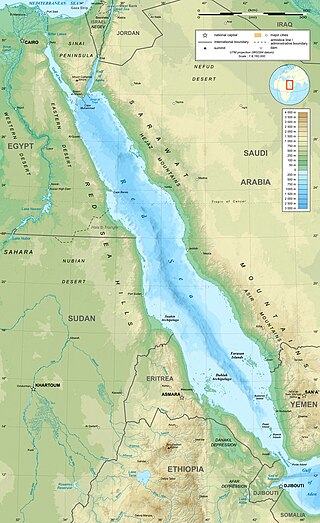
The Red Sea Dam is a speculative macro-engineering proposal put forward in 2007 by a group of scientists and engineers. Although the authors' intentions are to explore "the ethical and environmental dilemmas and some of the political implications of macro-engineering", the proposal has attracted both criticism and ridicule.

Atlantropa, also referred to as Panropa, was a gigantic engineering and colonisation idea that was devised by the German architect Herman Sörgel in the 1920s, and promoted by him until his death in 1952. The project was devised to contain several hydroelectric dams in key points of the Mediterranean Sea, such as the Strait of Gibraltar and the Bosporus, to cause a sea level drop and create new land to settle.
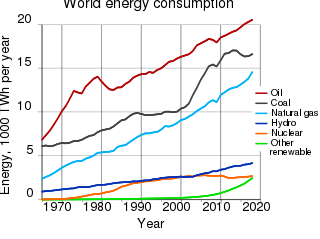
The environmental impact of the energy industry is significant, as energy and natural resource consumption are closely related. Producing, transporting, or consuming energy all have an environmental impact. Energy has been harnessed by human beings for millennia. Initially it was with the use of fire for light, heat, cooking and for safety, and its use can be traced back at least 1.9 million years. In recent years there has been a trend towards the increased commercialization of various renewable energy sources. Scientific consensus on some of the main human activities that contribute to global warming are considered to be increasing concentrations of greenhouse gases, causing a warming effect, global changes to land surface, such as deforestation, for a warming effect, increasing concentrations of aerosols, mainly for a cooling effect.
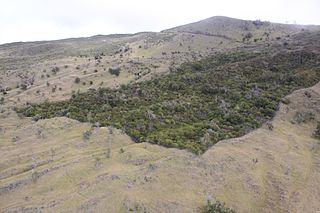
Land restoration, which may include renaturalisation or rewilding, is the process of ecological restoration of a site to a natural landscape and habitat, safe for humans, wildlife, and plant communities. Ecological destruction, to which land restoration serves as an antidote, is usually the consequence of pollution, deforestation, salination or natural disasters. Land restoration is not the same as land reclamation, where existing ecosystems are altered or destroyed to give way for cultivation or construction. Land restoration can enhance the supply of valuable ecosystem services that benefit people.

Desert greening is the process of man-made reclamation of deserts for ecological reasons (biodiversity), farming and forestry, but also for reclamation of natural water systems and other ecological systems that support life. The term "desert greening" is intended to apply to both cold and hot arid and semi-arid deserts. It does not apply to ice capped or permafrost regions. Desert greening has the potential to help solve global water, energy, and food crises. It pertains to roughly 32 million square kilometres of land.

The Qattara Depression Project, or Qattara Project for short, is a macro-engineering project concept in Egypt. Rivalling the Aswan High Dam in scope, the intention is to develop the hydroelectric potential of the Qattara Depression by creating an artificial lake.

Forest restoration is defined as “actions to re-instate ecological processes, which accelerate recovery of forest structure, ecological functioning and biodiversity levels towards those typical of climax forest” i.e. the end-stage of natural forest succession. Climax forests are relatively stable ecosystems that have developed the maximum biomass, structural complexity and species diversity that are possible within the limits imposed by climate and soil and without continued disturbance from humans. Climax forest is therefore the target ecosystem, which defines the ultimate aim of forest restoration. Since climate is a major factor that determines climax forest composition, global climate change may result in changing restoration aims. Additionally, the potential impacts of climate change on restoration goals must be taken into account, as changes in temperature and precipitation patterns may alter the composition and distribution of climax forests.

Mangrove restoration is the regeneration of mangrove forest ecosystems in areas where they have previously existed. The practice of mangrove restoration is grounded in the discipline of restoration ecology, which aims to “[assist] the recovery of resilience and adaptive capacity of ecosystems that have been degraded, damaged, or destroyed”. Since environmental impacts are an ongoing threat, to successfully restore an ecosystem implies not merely to recreate its former condition, but to strengthen its capacity to adapt to change over time. Mangrove forests are most likely to thrive in the upper half of the intertidal zone. If planted below the mean tide level, or subject to too great a sea level rise, they may fail to thrive. Success will also depend on the species chosen and their suitability to conditions.
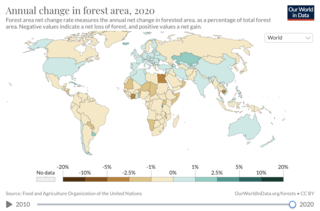
Deforestation is a primary contributor to climate change, and climate change affects forests.
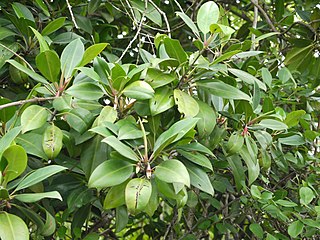
Mangrove deforestation in Myanmar is the clearing of mangrove forests, usually for commercial uses or resources extraction, which is occurring mainly in 3 different regions: Rakhine State, Ayeyarwaddy Mega Delta, and Tanintharyi Division. While large areas of mangrove forests remain, the deforestation rates of these forests have been increasing due to anthropogenic influences such as economic pressures to overexploit and expand the aquaculture and agricultural industry. There are also natural threats that contribute to mangrove deforestation such as soil erosion. There has been recent increased attention to conserve and restore these forests through rehabilitation projects and policies.
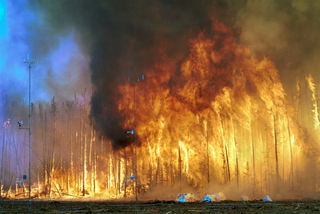
Terrestrial ecosystems found in the boreal regions of North America and Eurasia cover less than 17% of the earth's land surface, yet contain more than 30% of all carbon present in the terrestrial biome. In terms of carbon storage, the boreal region consists of three ecosystems: boreal forest, peatland, and tundra. Vast areas of the globe and are contributing greatly to atmospheric carbon release due to increased temperature and fire hazard. High northern latitudes will experience the most significant increase in warming on the planet as a result of increased atmospheric greenhouse gases thus placing in jeopardy the carbon sink in these areas. In addition to the release of carbon through the melting of permafrost, high intensity wildfires will become more common and thus contribute to the release of stored carbon. This means that the boreal forest and its fire regime is becoming an increasingly more significant factor in determining the global carbon budget.
The IBTS greenhouse is a biotectural, urban development project suited for hot arid deserts. It was part of the Egyptian strategy for the afforestation of desert lands from 2011 until spring of 2015, when geopolitical changes like the Islamic State of Iraq and the Levant – Sinai Province in Egypt forced the project to a halt. The project begun in spring 2007 as an academic study in urban development and desert greening. It was further developed by N. Berdellé and D. Voelker as a private project until 2011. Afterwards LivingDesert Group including Prof. Abdel Ghany El Gindy and Dr. Mosaad Kotb from the Central Laboratory for Agricultural Climate in Egypt, Forestry Scientist Hany El-Kateb, Agroecologist Wil van Eijsden and permaculturist Sepp Holzer was created to introduce the finished project in Egypt.















